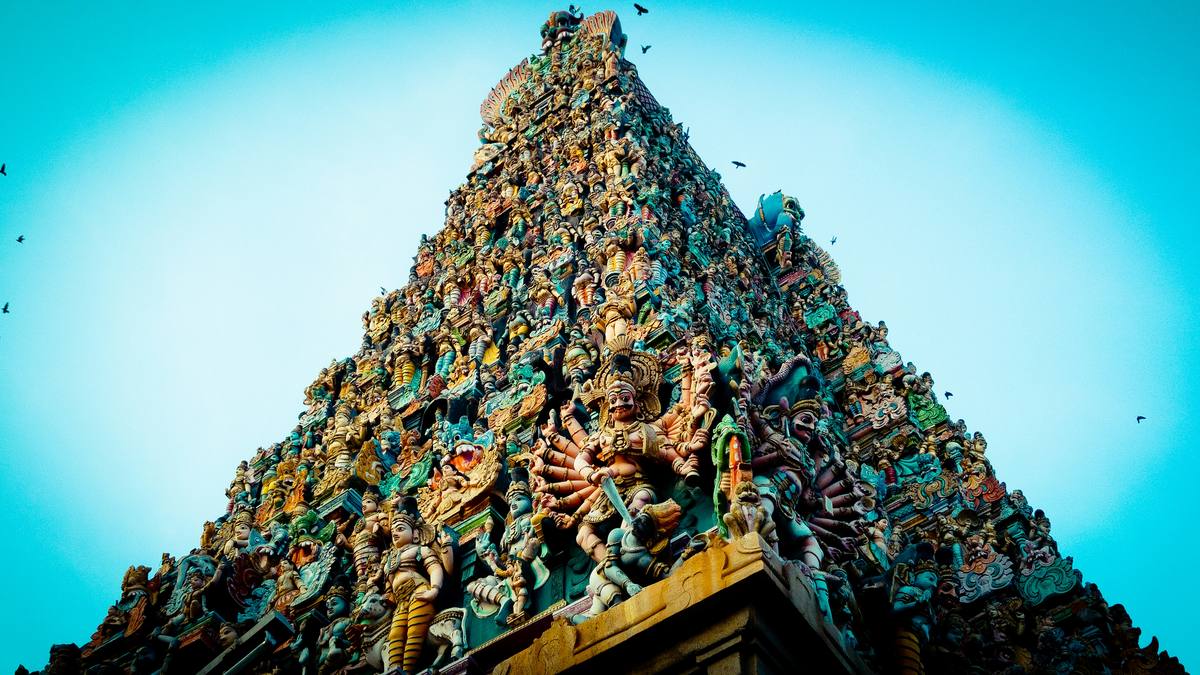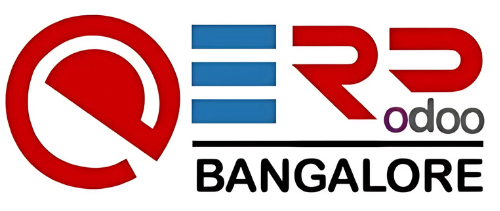[fusion_builder_container hundred_percent=”no” equal_height_columns=”no” menu_anchor=”” hide_on_mobile=”small-visibility,medium-visibility,large-visibility” class=”” id=”” background_color=”” background_image=”” background_position=”center center” background_repeat=”no-repeat” fade=”no” background_parallax=”none” parallax_speed=”0.3″ video_mp4=”” video_webm=”” video_ogv=”” video_url=”” video_aspect_ratio=”16:9″ video_loop=”yes” video_mute=”yes” overlay_color=”” video_preview_image=”” border_size=”” border_color=”” border_style=”solid” padding_top=”” padding_bottom=”” padding_left=”” padding_right=””][fusion_builder_row][fusion_builder_column type=”1_1″ layout=”1_1″ background_position=”left top” background_color=”” border_size=”” border_color=”” border_style=”solid” border_position=”all” spacing=”yes” background_image=”” background_repeat=”no-repeat” padding_top=”” padding_right=”” padding_bottom=”” padding_left=”” margin_top=”0px” margin_bottom=”0px” class=”” id=”” animation_type=”” animation_speed=”0.3″ animation_direction=”left” hide_on_mobile=”small-visibility,medium-visibility,large-visibility” center_content=”no” last=”no” min_height=”” hover_type=”none” link=””][fusion_text]
Table of Contents
ToggleIntroduction
In today’s digitally connected world, temples and trusts can no longer afford to remain offline. Devotees are increasingly turning to the internet to connect with their faith, learn about spiritual practices, and even donate to charitable causes. This creates a vital need for a strong digital presence, and a well-crafted website and web application can be the cornerstone of that presence.
Why Go Digital? The Power of an Online Abode
Imagine a temple with its doors open 24/7, accessible to devotees from across the globe. A website and web application can make this a reality. Here’s how:
- Widened Reach: Break geographical limitations and connect with devotees from all corners of the world. Share your temple’s history, philosophy, and upcoming events with a wider audience.
- Enhanced Accessibility: Information about daily rituals, pooja timings, and special darshan opportunities can be easily accessed at any time, from anywhere. This caters to busy schedules and makes spiritual connection more convenient.
- Transparency and Trust: A well-designed website fosters transparency by providing detailed information about the temple’s management, financial reports, and charitable activities. This builds trust and strengthens the bond with devotees.
- Streamlined Communication: Two-way communication becomes effortless. Devotees can ask questions, receive updates, and even register for events through online forms. This fosters a more engaged and interactive community.
- Simplified Donations: Offer a secure and convenient platform for devotees to donate online. This makes it easier for them to contribute to the temple’s upkeep and support ongoing charitable initiatives.
Beyond the Website: Exploring the Advantages of a Web App
A website is a great starting point, but a web application can take your digital presence a step further. Here’s what a web app can offer:
- Personalized Experience: Provide devotees with a personalized experience by allowing them to create profiles, track their puja bookings, and access exclusive content.
- Enhanced Engagement: Integrate multimedia elements like live darshan streams, devotional music, and spiritual discourses to keep devotees engaged and inspired.
- Push Notifications: Send timely reminders about upcoming events, festivals, and special poojas directly to devotees’ mobile devices. This ensures they don’t miss important occasions.
- Offline Functionality: Develop web apps that can function even without an internet connection. This allows devotees to access prayers, mantras, and temple information even when offline.

A Glimpse into the Digital Offerings: Key Features to Consider
When crafting your website and web application, consider incorporating features that cater to the specific needs of your temple or trust. Here are some key functionalities to explore:
- Detailed Temple Information: Showcase the temple’s history, architecture, deities enshrined, and significance in the religious landscape.
- Seva and Pooja Bookings: Allow devotees to book slots for poojas, special rituals, or seva opportunities online.
- Calendar of Events: Provide a comprehensive calendar highlighting upcoming festivals, special darshan timings, and temple celebrations.
- Donation Management System: Integrate a secure online donation platform that accepts various payment methods. Offer transparency by displaying donation receipts and utilizing funds.
- Multimedia Library: Share inspiring content such as devotional songs, bhajans, kirtans, and spiritual discourses through audio and video formats.
- Live Darshan: For those who cannot visit in person, offer live streaming of important rituals and pujas to create a virtual pilgrimage experience.
- Educational Resources: Publish articles, ebooks, or online courses related to the temple’s philosophy, traditions, and spiritual practices.
- Multilingual Support: Cater to a wider audience by offering your website and web app content in multiple languages.
By embracing the power of digital technology, temples and trusts can bridge the physical distance, foster stronger connections with devotees, and create a vibrant online space for spiritual exploration and community building. As the saying goes, “The world is a book, and those who do not travel read only a page.” In the digital age, a well-designed website and web application can be the temple’s open book, inviting devotees from all corners of the world to embark on their spiritual journey.
Crafting the Digital Abode: Design and Development Considerations for Temple/Trust Websites and Apps

Having established the importance of a digital presence for temples and trusts, let’s delve into the nitty-gritty of design and development. Here, we’ll explore key considerations to ensure your website and web application are not only informative but also user-friendly, accessible, and secure.
User Interface and User Experience Design (UI/UX Design)
The user interface (UI) is the visual language of your website and app. It encompasses the overall layout, color scheme, typography, and imagery. The user experience (UX) design focuses on how users interact with your digital platform. Both UI and UX design play a crucial role in creating a positive and engaging experience for devotees.
- Simplicity and Clarity: Strive for a clean and uncluttered interface that is easy to navigate. Use clear fonts, intuitive menus, and well-organized content layouts.
- Aesthetics and Cultural Relevance: Incorporate design elements that reflect the temple’s architecture, deities, and cultural significance. This creates a visually appealing and spiritually uplifting experience.
- Accessibility for All: Ensure your website and app are accessible to users with disabilities. Follow WCAG (Web Content Accessibility Guidelines) to incorporate features like screen reader compatibility, keyboard navigation, and alternative text descriptions for images.
- Multilingual Support: Cater to a wider audience by offering your website and app content in multiple languages. This demonstrates inclusivity and allows devotees from diverse backgrounds to connect with the temple.
Responsive Design for Mobile Accessibility (Responsive Web Design)
In today’s mobile-driven world, a responsive design is no longer an option, it’s a necessity. This ensures your website and app adapt seamlessly to different screen sizes, from desktops and laptops to tablets and smartphones. Here’s why it matters:
- Convenience for Devotees: Many users access religious information and services on their mobile devices. A responsive design ensures a smooth and consistent user experience regardless of the device.
- Improved Search Engine Optimization (SEO): Google prioritizes mobile-friendly websites in search results. A responsive design can improve your website’s ranking and visibility in search engines.
- Enhanced User Engagement: A responsive design allows for faster loading times and easier navigation on mobile devices, keeping users engaged and more likely to explore your digital offerings.
Integration of Donation and Payment Gateways
Offering a secure and convenient online donation platform is crucial for temples and trusts. Here’s what to consider when integrating donation functionalities:
- Secure Payment Gateways: Partner with reputable payment gateway providers that ensure secure online transactions and protect sensitive financial information. Popular options include PayPal, Stripe, and Authorize.net.
- Multiple Payment Methods: Offer a variety of payment methods to cater to different preferences, such as credit cards, debit cards, net banking options, and e-wallets.
- Transparency and Trust: Clearly display information about how donations are utilized and provide users with donation receipts. This builds trust and encourages recurring donations.
- Consider Offline Donations: While online donations are convenient, some devotees might prefer traditional methods. Provide clear information about donation boxes or bank account details for offline contributions.
Content Management System (CMS) Selection
A Content Management System (CMS) empowers you to easily manage and update your website and app content without extensive technical knowledge. Here are some key factors to consider when selecting a CMS:
- Ease of Use: Choose a CMS that offers a user-friendly interface with drag-and-drop functionalities and intuitive content editing tools. This allows authorized personnel within the temple or trust to update information without relying on developers.
- Features and Functionality: Ensure the CMS offers the features you need, such as multilingual support, image and video galleries, calendar management tools, and integration capabilities for donation gateways.
- Security and Scalability: Select a CMS with robust security features to safeguard sensitive information. The CMS should also be able to scale and adapt to your website’s or app’s growing needs over time.
- Open Source vs. Proprietary Options: Open source CMS platforms like WordPress are free to use but may require additional customization. Proprietary CMS solutions might offer more pre-built features but often come with licensing fees. Evaluate your needs and budget to make the best choice.
By carefully considering these design, development, and functionality aspects, you can create a user-friendly, accessible, and secure digital space for your temple or trust. This online abode will not only serve as a valuable resource for devotees but also foster a stronger connection with your spiritual community.
Key Features of Temple/Trust Website and Web Application

Having explored the design and development considerations, let’s delve deeper into the functionalities that can bring your temple’s or trust’s website and web application to life. These features will not only provide valuable information to devotees but also foster engagement, strengthen connections, and support your temple’s mission.
Event Calendar and Notification System
- Comprehensive Calendar: Maintain an updated calendar showcasing upcoming festivals, puja timings, special darshan opportunities, cultural events, and important religious occasions. Integrate this calendar across your website and app for easy access.
- Detailed Event Information: Provide detailed descriptions for each event, including timings, significance, dress code (if applicable), and any special instructions for devotees who wish to participate.
- Push Notifications and Reminders: Utilize push notifications to send timely reminders about upcoming events directly to users’ mobile devices. This ensures devotees don’t miss important occasions or registration deadlines.
- Live Streaming Capabilities: For events with limited physical capacity, consider offering live streaming options for pujas, discourses, and special ceremonies. This allows devotees from afar to participate virtually and experience the blessings.
Virtual Tours and Multimedia Content
- 360° Virtual Tours: Offer immersive virtual tours that allow devotees to explore the temple’s architecture, deities enshrined, and sacred spaces, even if they cannot visit in person. This can be particularly valuable for geographically distant devotees or those with physical limitations.
- High-Quality Images and Videos: Showcase the temple’s beauty and grandeur through high-resolution photographs and captivating videos. Capture daily rituals, poojas, and aarti ceremonies to give devotees a glimpse into the temple’s spiritual essence.
- Audio Library of Devotional Chants and Bhajans: Create an audio library featuring devotional music, hymns, kirtans, and spiritual discourses by renowned scholars. This allows devotees to access these resources for prayer, meditation, or simply for a sense of peace and inspiration.
- E-books and Online Courses: Publish e-books or offer online courses that delve deeper into the temple’s history, philosophy, traditions, and spiritual practices. This caters to devotees who seek a more in-depth understanding of their faith.
Membership Management and Registration
- Membership Programs: Develop tiered membership programs that offer devotees exclusive benefits such as discounts on puja bookings, access to special events, or invitations to volunteer opportunities.
- Online Registration: Offer a streamlined online registration process for devotees to become members. Ensure a secure and user-friendly registration form that captures necessary information for membership management.
- Member Portal: Create a dedicated member portal where devotees can manage their profiles, track their puja bookings, access exclusive content, and receive updates about temple activities. This fosters a sense of community and belonging among members.
- Volunteer Management: If your temple relies on volunteers for various activities, integrate a volunteer management system. This allows devotees to register online for specific volunteer opportunities and receive relevant information and schedules.
Online Donation and Fundraising
- Secure Donation Platform: Integrate a secure online donation platform that accepts various payment methods such as credit cards, debit cards, net banking options, and e-wallets. Ensure PCI compliance for secure online transactions.
- Multiple Donation Options: Offer various donation categories such as general donations, specific puja offerings, temple maintenance support, or charity initiatives. This allows devotees to choose how they wish to contribute.
- Recurring Donation Options: Make it easy for devotees to set up recurring donations, allowing them to consistently support the temple’s operations and charitable activities.
- Transparent Donation Management: Clearly display how donations are utilized. Publish annual reports or financial statements on your website to demonstrate transparency and build trust with donors.
- Fundraising Campaigns: Leverage your website and app to launch online fundraising campaigns for specific temple projects or charitable initiatives. Utilize features like progress bars and donation goals to incentivize participation.
By incorporating these key features, your temple’s or trust’s website and web application can transform into a dynamic and engaging platform. It will not only serve as a valuable source of information but also empower devotees to connect with their faith, participate in events virtually, and contribute to the temple’s mission through online donations and volunteering. Remember, a well-crafted digital presence can bridge geographical distances, foster a thriving online community, and ultimately, strengthen the spiritual connection between devotees and your temple or trust.
Enhancing Community Engagement and Outreach

In today’s digital age, a temple’s or trust’s website and web application can be powerful tools for fostering community engagement and outreach. By incorporating features that encourage interaction and participation, you can create a vibrant online space that strengthens the bond between devotees and your institution.
Social Media Integration and Sharing
- Active Social Media Presence: Maintain active social media profiles on platforms like Facebook, Instagram, and Twitter. Share temple updates, event announcements, inspiring messages, and captivating visuals to engage a wider audience.
- Social Sharing Buttons: Integrate social sharing buttons across your website and app content. This allows devotees to easily share information about your temple, upcoming events, or inspirational messages with their networks, expanding your online reach.
- Encourage User-Generated Content: Run contests or encourage devotees to share their experiences and photos from temple visits on social media using designated hashtags. This fosters a sense of community and user engagement.
Online Pooja Booking and Reservation System
- Seamless Booking System: Offer a user-friendly online platform for devotees to book slots for specific pujas, sevas, or special darshan opportunities. This eliminates the need to physically visit the temple for booking, saving time and enhancing convenience.
- Real-Time Availability: Provide a real-time calendar that displays puja timings and available slots. This allows devotees to plan their visits efficiently and avoid disappointment.
- Confirmation and Reminder System: Send automated confirmation emails and push notifications to booked devotees, reminding them of their puja or seva timings. This ensures smooth operations and reduces the risk of missed appointments.
Discussion Forums and Community Boards
- Interactive Forums: Create online forums or discussion boards where devotees can ask questions, share their experiences, and engage in meaningful conversations about spiritual topics. This fosters a sense of community and allows for peer-to-peer learning.
- Live Chat Support: Offer real-time chat support through your website or app. This allows devotees to get immediate answers to questions they might have about temple rituals, upcoming events, or donation options.
- Testimonials and Reviews: Encourage devotees to leave testimonials and reviews about their experiences with the temple. Positive online feedback builds trust and attracts new visitors.
Volunteer Management and Recruitment
- Volunteer Portal: Develop a dedicated volunteer portal where devotees can register their interest in volunteering for various temple activities. This allows for efficient volunteer management and streamlines the recruitment process.
- Volunteer Opportunities: Clearly outline different volunteer opportunities available at the temple, highlighting the skills needed and the benefits of volunteering.
- Recognition and Appreciation: Publicly acknowledge and appreciate the contributions of your volunteers through online platforms or temple newsletters. This motivates them and encourages others to get involved.
By implementing these strategies, your temple or trust can transform your digital presence from a static information portal into a vibrant online community hub. This fosters deeper connections with devotees, encourages active participation, and ultimately, strengthens the spiritual bond between your institution and the wider community.
Effective Marketing and Promotion Strategies

In today’s digital landscape, a well-designed website and app are just the first steps. To truly maximize their impact, temples and trusts need effective marketing and promotion strategies to reach their target audience and build a thriving online community. Here are some key considerations:
Search Engine Optimization (SEO) Techniques
- Keyword Research: Identify relevant keywords that devotees might use to search for temples, pujas, or spiritual information online. Optimize your website and app content with these keywords to improve search engine ranking and organic visibility.
- Content Marketing: Develop high-quality content that is informative, engaging, and caters to the spiritual needs of your target audience. Publish blog posts, articles, or videos that answer common questions, explore religious topics, or showcase the temple’s history and significance.
- Mobile-Friendly Design: Ensure your website and app are mobile-friendly, as many users search online using their smartphones. This improves user experience and helps your website rank higher in mobile search results.
Email Marketing and Newsletter Campaigns
- Email List Building: Encourage devotees to subscribe to your email list by offering valuable incentives. This allows you to send out regular newsletters with temple updates, upcoming events, inspirational messages, and puja booking reminders.
- Segmented Email Campaigns: Segment your email list based on demographics or interests to personalize your newsletters and deliver targeted content that resonates with specific groups of devotees.
- Track and Analyze Results: Use email marketing tools to track open rates, click-through rates, and other engagement metrics. Analyze these results to refine your email marketing strategy and ensure your messages are reaching the right audience.
Partnerships with Local Communities and Organizations
- Collaborate with Local Media: Partner with local newspapers, radio stations, or online publications to spread awareness about your temple’s website and app. Offer them informative articles, press releases, or event listings for publication.
- Interfaith Outreach: Build relationships with other religious organizations in your community. Consider hosting joint events or workshops that promote interfaith understanding and collaboration.
- Community Engagement Initiatives: Partner with local community centers or charities to support social causes. Promote your online donation platform to encourage devotees to contribute to these initiatives.
Online Advertising and Promotion Channels
- Social Media Advertising: Utilize targeted social media advertising on platforms like Facebook and Instagram to reach a wider audience with specific demographics or interests. Promote your temple events, inspirational content, or online booking system through these paid advertising options.
- Search Engine Marketing (SEM): Consider pay-per-click (PPC) advertising on search engines like Google. This allows your website to appear at the top of search results for relevant keywords, driving targeted traffic to your online platforms.
- Influencer Marketing: Partner with religious influencers or spiritual leaders who share your values. Encourage them to promote your temple and its online presence to their followers.
By implementing these comprehensive marketing and promotion strategies, temples and trusts can ensure their digital presence reaches a wider audience. This not only strengthens their online community but also attracts new devotees, increases awareness of their spiritual offerings, and ultimately, fosters a stronger connection with the community they serve.
Emerging Trends and Technologies

The digital landscape is constantly evolving, and the world of temple and trust websites and apps is no exception. Here’s a glimpse into some exciting trends and technologies that hold the potential to transform the future of online spiritual experiences:
Integration of Augmented Reality (AR) and Virtual Reality (VR)
- Immersive Temple Experiences: Imagine devotees virtually touring a temple from anywhere in the world, experiencing rituals in AR, or participating in virtual meditations. AR and VR can create immersive and interactive experiences that deepen the connection between devotees and their faith.
- Virtual Darshan Opportunities: VR technology can offer realistic virtual darshan experiences, allowing devotees to feel virtually present even if they cannot visit the temple physically. This can be particularly beneficial for geographically distant or homebound individuals.
Voice Search and Smart Assistant Integration
- Seamless Information Access: Devotees can use voice commands to access information about temple timings, upcoming events, or even mantras through smart speakers or virtual assistants. This hands-free approach enhances accessibility and user convenience.
- Personalized Pooja Booking: Imagine devotees booking specific pujas or sevas through voice commands using smart assistants. This streamlines the booking process and caters to users who prefer voice-based interaction.
Predictive Analytics for Personalized User Experiences
- Tailored Content Recommendations: Leveraging user data and browsing history, AI-powered platforms can recommend personalized content like relevant articles, spiritual discourses, or even puja offerings that cater to individual interests.
- Enhanced User Engagement: By understanding user behavior, the platform can offer suggestions for upcoming events, volunteer opportunities, or community forums that align with the devotee’s interests, fostering a more engaging experience.
Continuous Adaptation to Technological Advancements
- Staying Ahead of the Curve: The digital landscape is ever-changing. Temples and trusts need to be adaptable and embrace new technologies like blockchain for secure online donations or chatbots for real-time query resolution.
- Future-Proofing the Digital Abode: By continuously monitoring emerging trends and adapting the website and app functionalities, temples can ensure their online presence remains relevant, engaging, and caters to the evolving needs of devotees in the digital age.
These are just a few examples of how the future of temples and trust websites and apps might unfold. As technology continues to advance, we can expect even more innovative solutions that will transform the way devotees connect with their faith and with each other, fostering a more enriching and inclusive digital spiritual experience.
Conclusion: Temples and Trusts Thrive in the Digital Age
In today’s interconnected world, a strong digital presence is no longer a luxury for temples and trusts; it’s a necessity. By embracing website and web application technologies, these institutions can bridge geographical distances, foster deeper connections with devotees, and ultimately, empower their spiritual outreach.
Beyond simply disseminating information, well-crafted digital platforms become vibrant hubs for community engagement. They offer online booking systems for pujas, facilitate secure online donations, and provide immersive experiences through virtual tours and multimedia content. Social media integration and targeted marketing strategies further amplify reach, attracting new devotees and fostering a sense of belonging.
The future holds exciting possibilities with emerging technologies like AR/VR and AI promising even more personalized and interactive experiences. By continuously adapting to these advancements, temples and trusts can ensure their digital abodes remain relevant and engaging, empowering them to thrive in the ever-evolving digital landscape.
Contact us for more information +91-9035-966-966,+91-8050-966-966
[/fusion_text][fusion_accordion type=”” boxed_mode=”” border_size=”1″ border_color=”” background_color=”” hover_color=”” divider_line=”” title_font_size=”” icon_size=”” icon_color=”” icon_boxed_mode=”” icon_box_color=”” icon_alignment=”” toggle_hover_accent_color=”” hide_on_mobile=”small-visibility,medium-visibility,large-visibility” class=”” id=””][fusion_toggle title=”What features should a Temple/Trust website include?” open=”no”]
A Temple/Trust website should include features such as event calendars, donation portals, membership registration, virtual tours, and interactive multimedia content to engage visitors effectively.
[/fusion_toggle][fusion_toggle title=”How can a Temple/Trust website enhance community engagement?” open=”no”]
By providing features like online pooja booking, discussion forums, volunteer management systems, and social media integration, a Temple/Trust website can foster greater community participation and interaction.
[/fusion_toggle][fusion_toggle title=”What security measures should be implemented for Temple/Trust websites?” open=”no”]
Temple/Trust websites should prioritize SSL encryption, regular security audits, GDPR compliance for user data protection, and robust backup and disaster recovery plans to ensure the security and integrity of user information.
[/fusion_toggle][fusion_toggle title=”What are the benefits of having a web application for a Temple/Trust?” open=”no”]
A web application can offer more advanced features and functionalities than a traditional website, such as personalized user experiences, real-time updates, and seamless integration with other systems, enhancing the overall user experience and engagement.
[/fusion_toggle][fusion_toggle title=”How can Temple/Trust websites leverage digital marketing strategies?” open=”no”]
Temple/Trust websites can utilize digital marketing techniques such as search engine optimization (SEO), email marketing, social media promotion, and online advertising to increase visibility, attract more visitors, and promote events and initiatives effectively.
[/fusion_toggle][/fusion_accordion][/fusion_builder_column][/fusion_builder_row][/fusion_builder_container]



